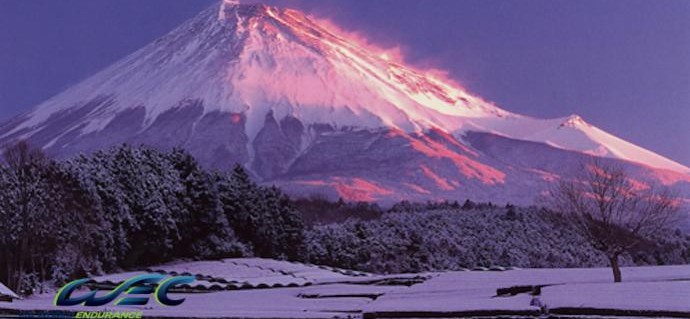
If Fuji could talk...
For the penultimate round of the 2012 season, the FIA World Endurance Championship moves on to Fuji in Japan, a Toyota heartland following the Japanese constructor’s acquisition of the Fuji Speedway in 2000. Situated at the foot of Mount Fuji, one of Japan’s three sacred mountains alongside Mount Tate and Mount Haku, the 4.56km track layout includes an extremely impressive straight of 1.5 km in length.
Fuji Speedway is to be found in the town of Oyama, within the hyper-industrialised prefecture of Shizuoka, where nearly half of all of the green tea consumed in Japan is grown. Mount Fuji is obviously the biggest local attraction, culminating at 3,775 metres (12,389 ft) with a stratovolcano which last erupted in 1707. Experts can’t agree on the origin of the name Fuji, but one thing is sure: in Japan, Mount Fuji is called Fuji-san, and not Fujiyama as many Westerners believe, ‘yama’ being the mistranslation of the Kanji character 山which means ‘mountain’.
Although situated in southern Japan, temperatures at the top of Mount Fuji are somewhat cool and the climb to the top of an average of 150,000 people per year is not recommended between the months of October and May as the snow and strong winds have been the cause of many accidents. If the window is open for long enough for the climb via one of the four routes to the summit of Fuji-san, the ascent is not out of reach and is a sort of pilgrimage for the Japanese who have requested the inclusion of the famous active volcano in the UNESCO World Heritage in the Cultural category and not the Natural category.
The first man to attempt the climb was an unknown monk in the seventh century, but it was not until the late nineteenth century that a non-Japanese climber reached the summit of Fuji-san, and all women were banned from the mountain until the Meiji period which covers the late nineteenth and early twentieth century.
Mount Fuji’s seismic activity, being part of the Pacific Ring of Fire, delights lovers of hot water baths: ‘onsen’ – hot springs – abound in the region, which have enabled ‘ryokan’, traditional Japanese inns, to multiply within the Five Lakes region where the circuit is situated. Lake Kawaguchi is well-known for reflecting the image of Mount Fuji, while the Sai Lake is bordered by the Aokigara Jukai forest, the weird and wonderful figures of which pepper regional legends.
The presence of the FIA World Endurance Championship is most definitely not a legend! At this time of year temperatures can be chilly in the region because of the altitude. Will Mount Fuji be adorned with its snowy overcoat to welcome the Championship’s competitors to Fuji Speedway? Reply on October 15 with the 6 Hours of Fuji! We’ll know the answer on 15th October with the 6 Hours of Fuji!
Fiona Miller


